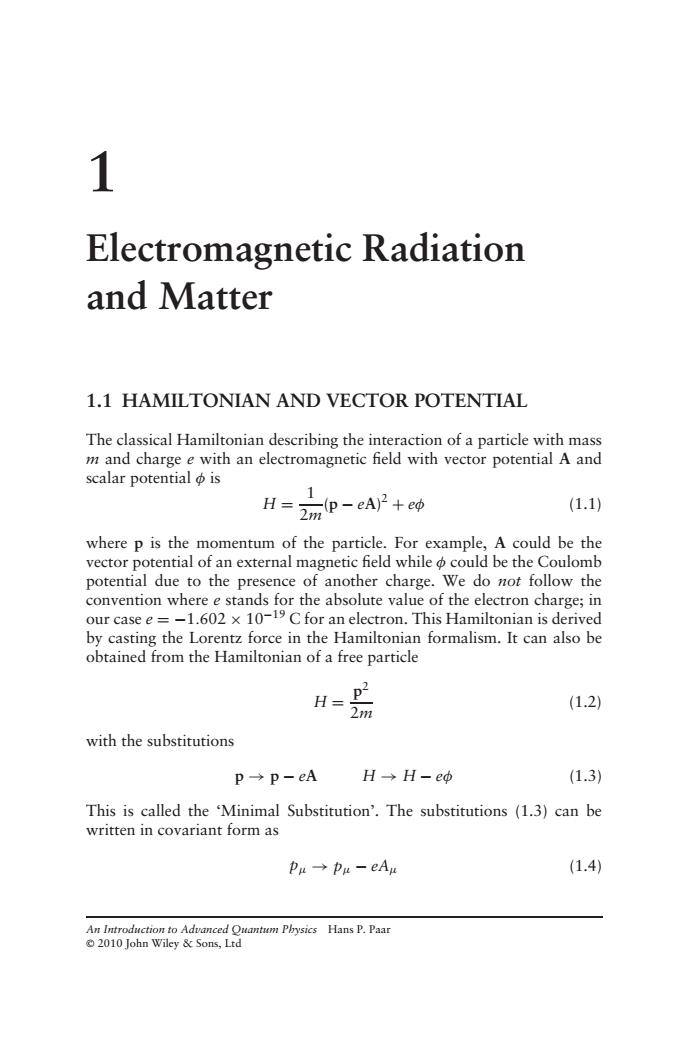正在加载图片...

1 Electromagnetic Radiation and Matter 1.1 HAMILTONIAN AND VECTOR POTENTIAL The classical Hamiltonian describing the interaction of a particle with mass mand charge e with an electromagnetic field with vector potential A and scalar potentials H=2m(p-cA)+ (1.1) where p is the momentum of the particle.For example,A could be the vector potential of an external magnetic field while could be the Coulomb potential due to the presence of another charge.We do follow the 。 or the absolute value our case e= by casting the Lorentz force in the Hamiltonian formalism.It can also be obtained from the Hamiltonian of a free particle 发 (1.2) with the substitutions p→p-eA H→H-eφ (1.3) This is called the 'Minimal Substitution'.The substitutions(1.3)can be written in covariant form as pu→pu-eAu (1.4) ycHan P.Par1 Electromagnetic Radiation and Matter 1.1 HAMILTONIAN AND VECTOR POTENTIAL The classical Hamiltonian describing the interaction of a particle with mass m and charge e with an electromagnetic field with vector potential A and scalar potential φ is H = 1 2m (p − eA) 2 + eφ (1.1) where p is the momentum of the particle. For example, A could be the vector potential of an external magnetic field while φ could be the Coulomb potential due to the presence of another charge. We do not follow the convention where e stands for the absolute value of the electron charge; in our case e = −1.602 × 10−19 C for an electron. This Hamiltonian is derived by casting the Lorentz force in the Hamiltonian formalism. It can also be obtained from the Hamiltonian of a free particle H = p2 2m (1.2) with the substitutions p → p − eA H → H − eφ (1.3) This is called the ‘Minimal Substitution’. The substitutions (1.3) can be written in covariant form as pµ → pµ − eAµ (1.4) An Introduction to Advanced Quantum Physics Hans P. Paar 2010 John Wiley & Sons, Ltd